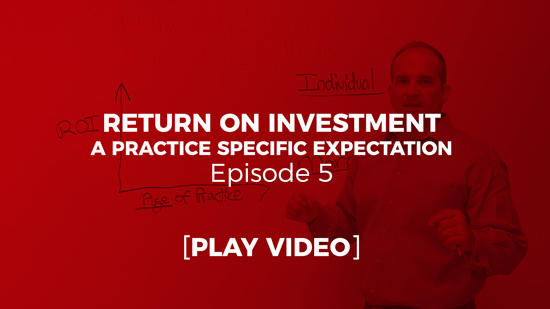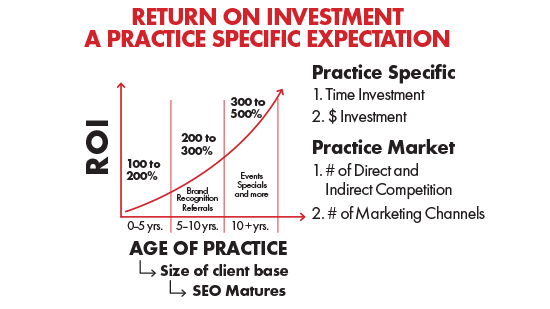Practice-Specific Expectations
- Time—First, you should know how much time you expect to spend on your business. The answer is fairly straightforward: the more time you put in, the more money you will make.
- Monetary Investment—If you’re new to the industry and just getting started, you may not have as much money available. However, it’s important to have some funds accessible for marketing to help you establish yourself and your business.
Without an installed client base, you’ll need this monetary investment to help grow the early years of your practice.
Market-Specific Expectations
- Direct and Indirect Competition—ROI is, to a certain extent, driven by the market. This means that the ability to achieve your desired ROI will be more difficult in competitive markets. To help navigate any market situation, you’ll need to know how many direct and indirect competitors you are working against.
- Available Marketing Channels—Larger markets will have more options for channels such as paid placement, radio stations, and all forms of media that could be valid channels.
Of course, these all depend on the business you would like to run. Understand your options and then make choices in alignment with who you would like to reach.
ROI Trajectory
General theory shows that the longer you are in practice and the more mature your practice becomes, the higher your ROI should be. Although each business is different, you should aim for 100-200 percent ROI in the first five years of practice. Expect to spend more money in these first years—but know it will pay off in the long run.
As your practice matures into the five to 10-year range, your ROI can likely be between 200 and 300 percent. This number grows faster in this stage due to age and size of your client base. You will have more referrals, more brand recognition, and an easier patient acquisition process on your marketing.
SEO will also mature during this time. As a result, you are naturally ranking higher, getting more backlinks, and generally experiencing more ease in acquisition.
After 10 years, based on your practice’s lifetime value, you should be able to achieve 300-500 percent ROI, while the money you spend should be decreasing. During this stage of growth, you can spend marketing time on events and specials that cost little to nothing, but still generate revenue with your client base.
Although ROI expectations will be highly dependent on the practice and the market, these tips can help you better evaluate where your business may be, and provide the steps you can take to continue to grow and expand into the future.

















